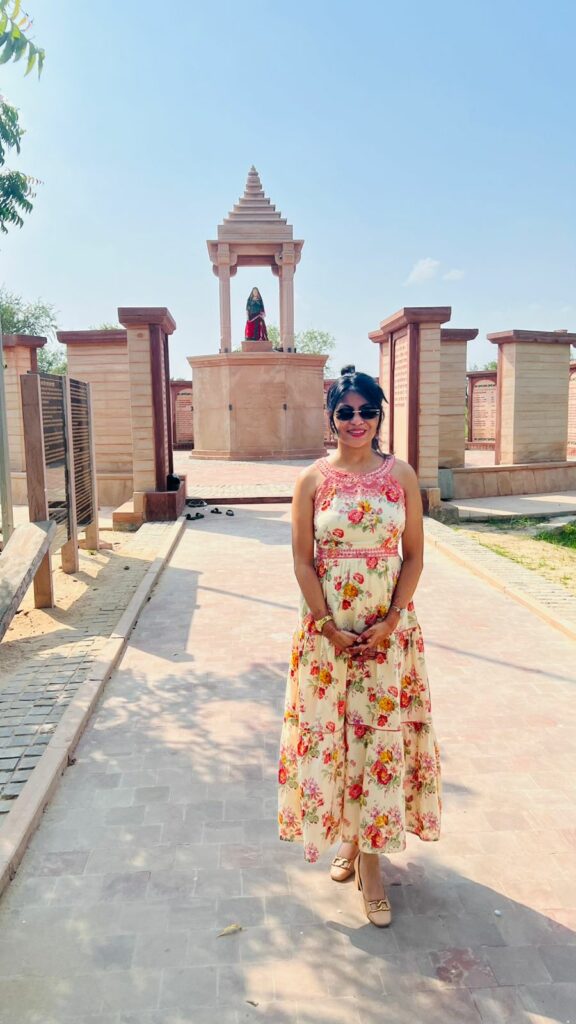Simona Choudhury
The Khejarli massacre stands as a profound historical testament to unwavering ecological commitment, deeply ingrained within the Bishnoi community’s principles. The Bishnoi community is a unique ethno-religious group predominantly found in the Marwar region of Western Rajasthan, India. Their distinct identity was founded in 1485 AD by Guru Jambheshwar, who created 29 commandments – ‘bish’ means twenty and ‘noi’ means nine , from which their name “ Bishnoi”is derived.
Before knowing about the massacre, it is important for the readers to understand the significance of the Khejri tree (Prosopis cineraria) in the lives of the Bishnoi which holds intense ecological, economic, and cultural importance within the arid landscape of Rajasthan. This indigenous species exhibits remarkable resilience, thriving in harsh desert conditions due to its deep root system, which stabilizes soil, prevents desertification.
Also Read: Lakshmi Puja: Celebrating Wealth, Prosperity, and Holistic Well-Being
Ecologically, it provides crucial shade, nutritious fodder for livestock, and sustains various wildlife, thus playing a pivotal role in maintaining the desert ecosystem. Economically, the Khejri is invaluable to rural communities, offering timber, fuel wood, medicine and its pods, known as sangri, which serve as an important food source and income generator. Culturally, it is revered as a sacred tree, deeply interwoven with local traditions and festivals, symbolizing life and prosperity.

The intense ecological consciousness of the Bishnoi community stems directly from the spiritual directives enshrined in the commandments implemented by their revered leader, Guru Jambheshwar( Jambhaji) . Hence, it is a grave crime and a sin to cut or destroy these trees as per the Bishnoi Community’s guidelines. In 1730, in a village near Jodhpur , this tragic event saw Amrita Devi , a Bishnoi lady, her two daughters, and 363 other Bishnoi villagers brutally sacrificed while endeavoring to protect sacred khejri trees from felling for royal purposes. This act exemplified their strict adherence to the 29 commandments, which include rigorous rule against harming flora and fauna. Maharaja Abhay Singh of Marwar ordered his representative, Giridhar Bhandari and soldiers to Khejarli chop off the khejri trees to procure timber to build his new palace unaware of the massacre of the innocents but upon learning of the horrific events, the Maharaja promptly proceeded to the site, expressing profound condemnation for Giridhar Bhandari’s actions and issuing a solemn vow never to permit the cutting of their sacred trees nor harming their natural environment and its inhabitants. This royal decree has, remarkably, been honored and upheld by his successors and the region’s populace, solidifying a lasting legacy of environmental conservation till date.
A dedicated monument and two temples , the original and a new one at Khejarli now commemorates this ultimate sacrifice, serving as a perpetual reminder of their environmental ethos and the enduring significance of the Khejarli trees. The temple serves not merely as a place of worship but as a solemn reminder of their unwavering commitment to ecological preservation, a philosophy remarkably ahead of its time. Thus, the site remains a powerful symbol of ecological stewardship and a testament to the ultimate sacrifice made for the protection of biodiversity. Bishnoi community’s temples traditionally don’t allow Non Bishnois to enter , further underscoring their distinct spiritual identity and reverence for their sacred spaces. Hence , it makes a personal visit to one of their sacred sites a profoundly significant experience for me. The opportunity to enter such a temple, offer prayers, and delve into its history and profound significance was a privilege of immense personal value. The newly constructed temple was particularly impressed with its vivid wall paintings, which meticulously depict the historical massacre sequences, serving as a powerful visual testament to the community’s enduring principles and sacrifices. This invaluable access was graciously facilitated by Mrs. Meena Bishnoi, whose generous use of her political contacts made this unique cultural immersion possible.
Also Read: Alternative to Education
This trip was possible only because of the team at Umaid Bhawan Palace . Mr. Manu Sharma, Mrs. Meena Bishnoi,Mr. Gaurav Samtani, nine star palace butler manager Mr. Swaroop Singh Rathore and the royal family ‘s Chauffeur Bhagwat ji’s effort for this rare engagement with a deeply spiritual tradition proved to be a profoundly humbling and enlightening experience.
On your next trip to Jodhpur , do visit this sacred site for a fulfilling trip !

